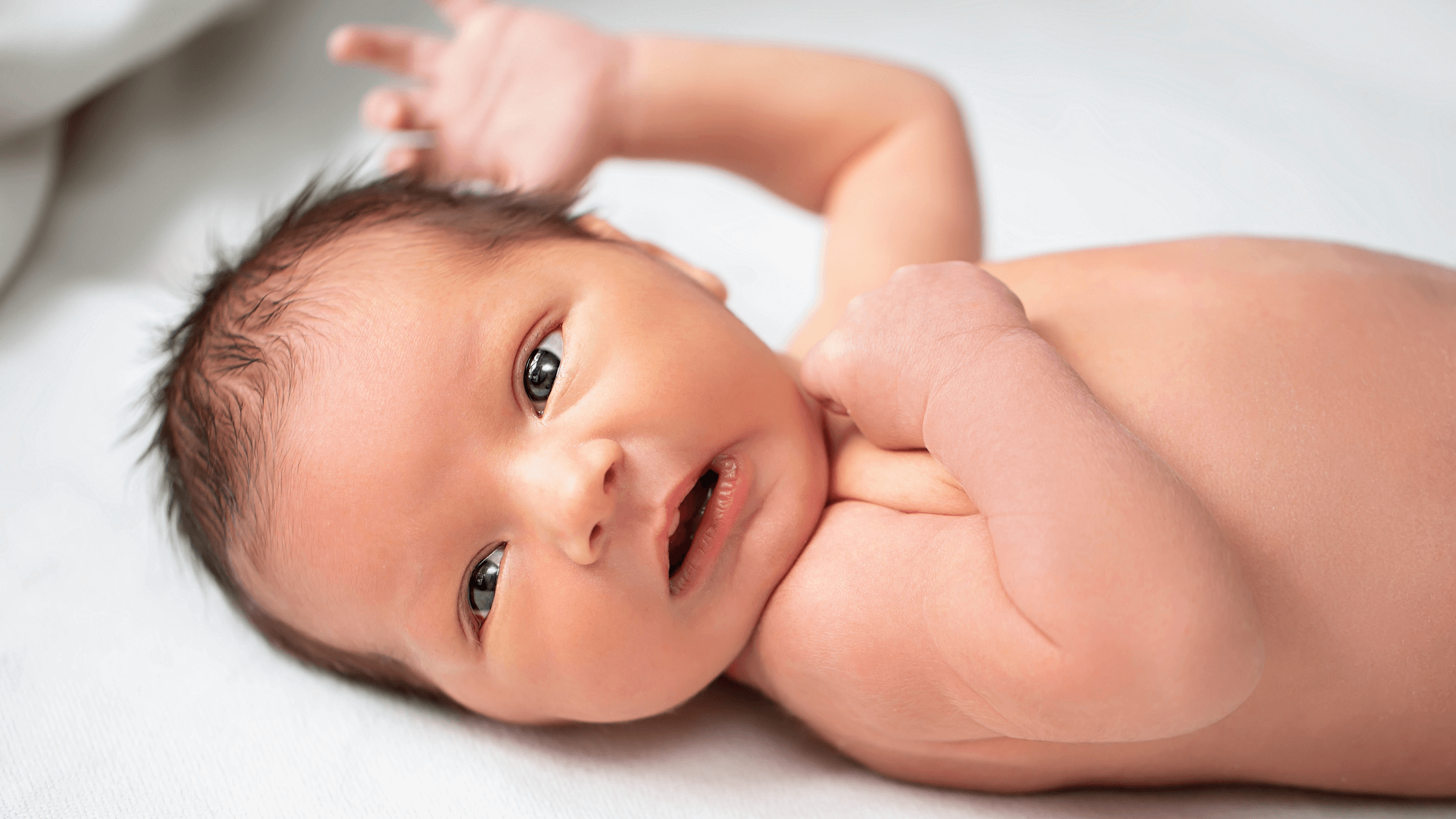
28 Apr Newborn Vision: What Can Babies Actually See?
You lock eyes with your newborn during a 2 a.m. feeding and wonder—can they really see me? The answer? Sort of.
A baby’s vision is one of the most fascinating (and fastest-changing) parts of early development. From blurry outlines to bold colors, your little one’s visual world evolves rapidly in just a few short months. Here’s a month-by-month look at what’s going on behind those curious eyes—and how you can help support their growth.
Birth to 1 Month: Blurry but Meaningful
Newborns can only see about 8–12 inches in front of them—just enough to focus on your face during feedings. Their world is mostly made up of shades of gray, and their eyes might appear to cross or wander (which is completely normal at this stage).
What they’re drawn to:
- High-contrast black-and-white patterns
- Bold, simple shapes
- Your face (even if it’s a little fuzzy)
1 to 2 Months: Watching the World Begin
At this stage, your baby starts to recognize movement and respond to light. They may begin tracking slow-moving objects and making eye contact for longer periods. This is the beginning of visual connection—those sweet moments when your baby locks eyes with you and seems to recognize your face.
Common signs of progress:
- Following objects from side to side
- Turning toward light sources
- Fixating on familiar faces
3 to 4 Months: Hello, Color
Your baby’s color vision is kicking in, and they can now see brighter, more vivid colors—especially red and green. Depth perception is also starting to develop, which helps them reach for objects and explore the space around them.
What to look for:
- Reaching for and grasping toys
- Tracking things across the room
- Smiling in response to faces and expressions
5 to 6 Months: Seeing the Big Picture
By now, babies are seeing in full color, and their vision is much clearer and sharper. They’re starting to pick up on finer visual details, recognize people from a distance, and show more interest in what’s happening around them.
This is also the recommended age for a first vision screening—usually done at your child’s 6-month well visit.
How to Support Your Baby’s Vision Development
No special equipment needed—just consistent, loving interaction. These simple activities help strengthen your baby’s eyesight:
- Make regular eye contact and smile
- Offer toys with high contrast and bold colors
- Encourage tummy time to support motor and visual development
- Slowly move toys in front of their face to promote tracking
- Talk and sing to link visual and auditory stimulation
When to Talk to Your Pediatrician
While every baby develops at their own pace, reach out if you notice any of the following:
- Lack of eye contact by 2 months
- Eyes that cross or drift consistently after 4 months
- No visual interest by 3–4 months
- Frequent squinting or eye rubbing
We’re always here to answer your questions and guide you through each milestone with confidence.
From First Blinks to First Books—We’re With You
By their first birthday, most babies will go from seeing fuzzy shapes to recognizing faces from across the room, reaching for favorite toys, and pointing at new discoveries. It’s a remarkable transformation—and it happens fast.
Have questions about your baby’s vision or want to schedule a well visit? Contact us today. We’re here to support you and your growing family every step of the way.

